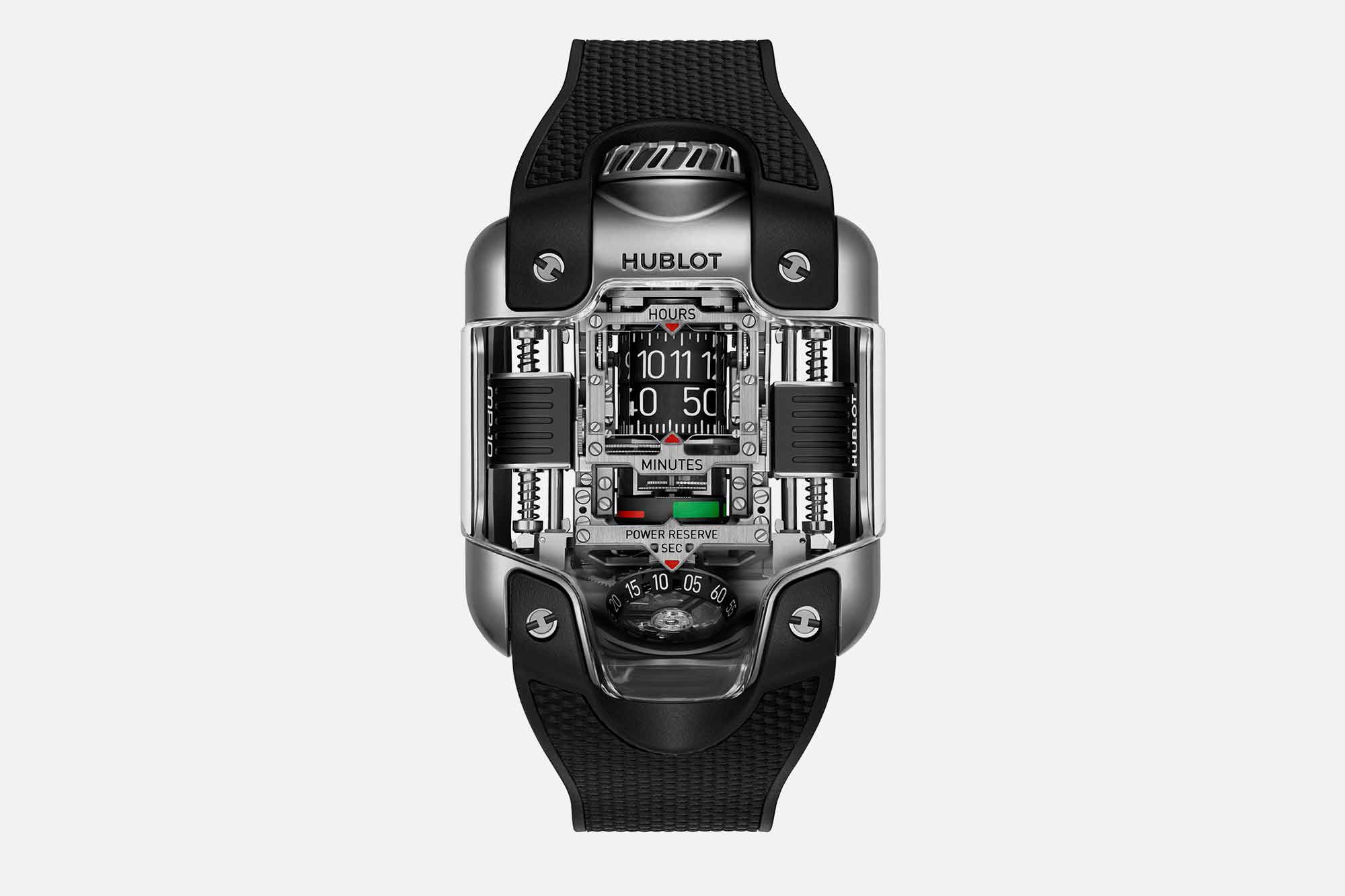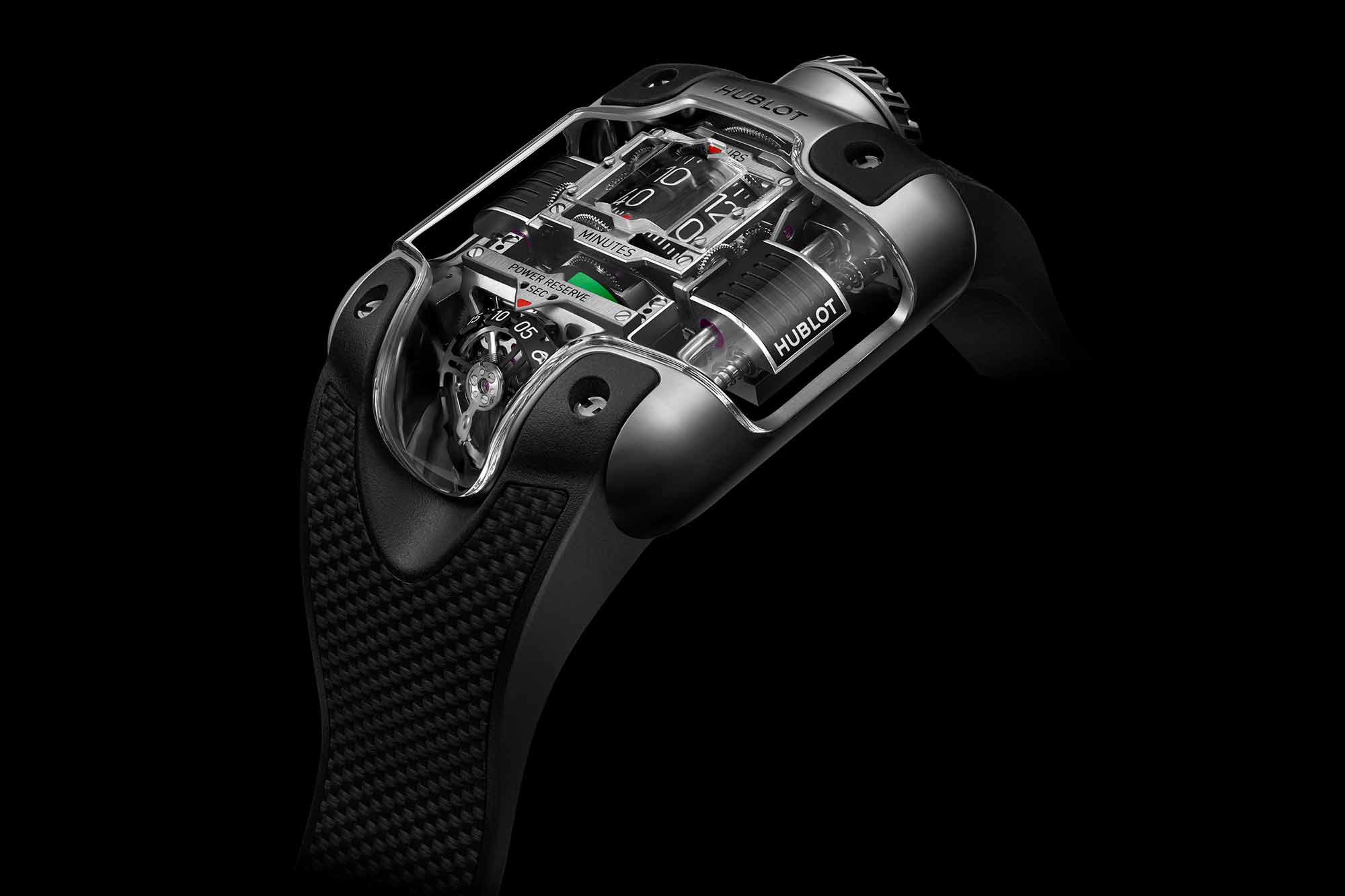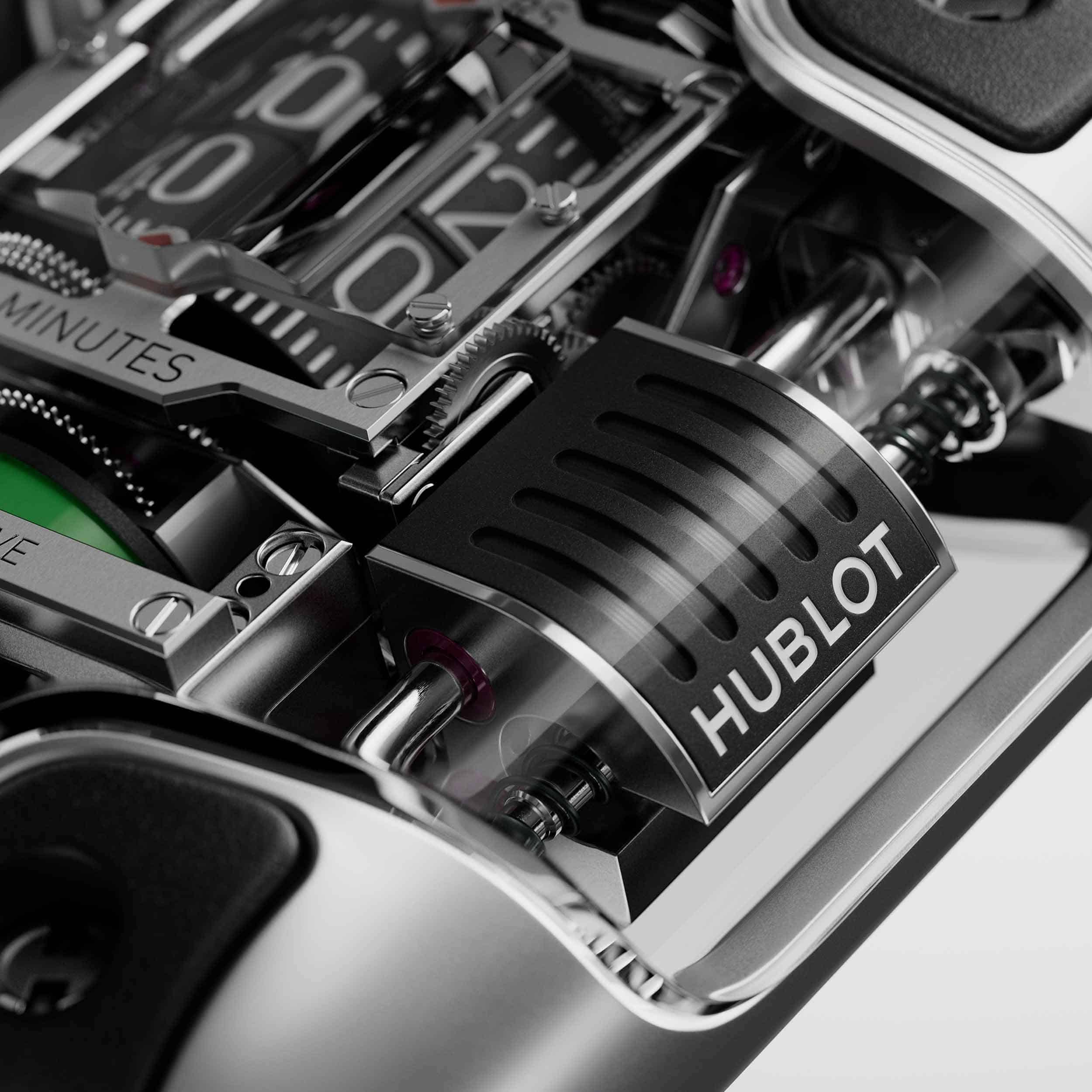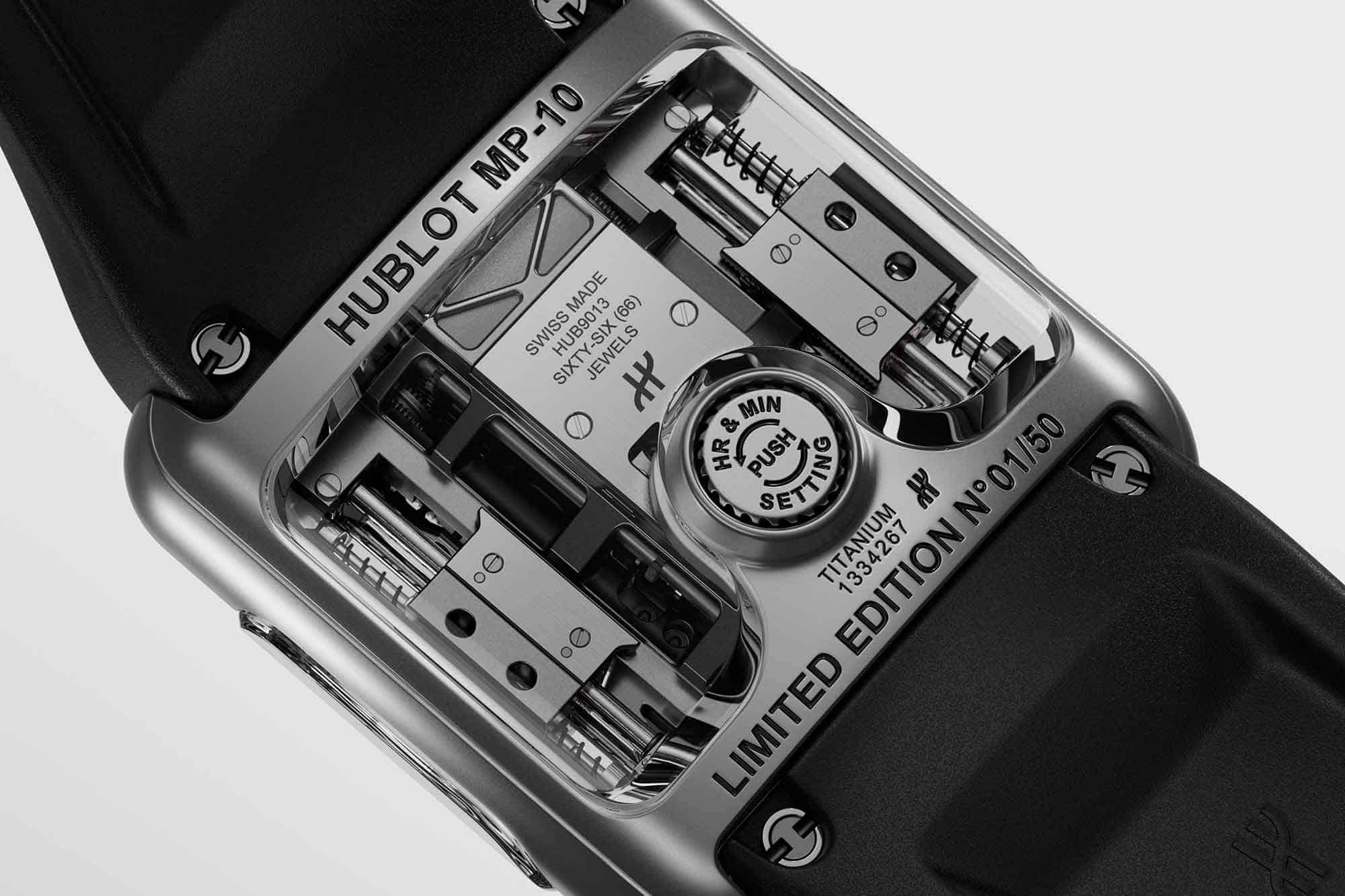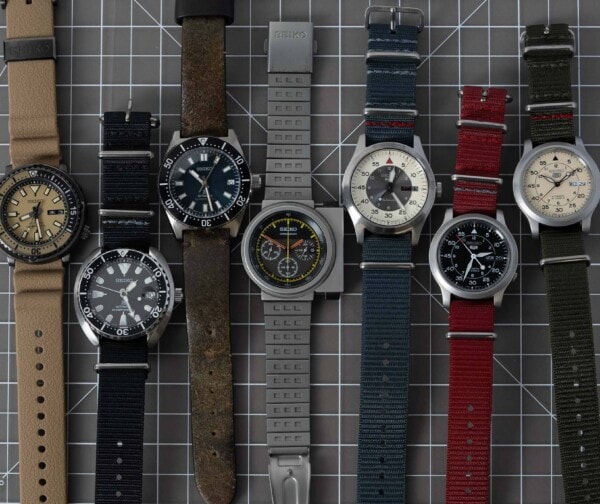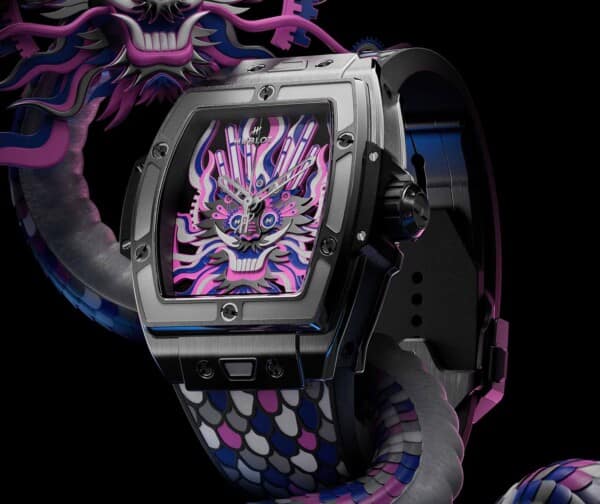Why mount a tourbillon at 35º? If a tourbillon is mounted vertically — that is, parallel to the plane of a dial as on a typical tourbillon watch — it experiences a theoretical rate deviation as the watch moves between its two most common orientations, lying flat on a surface, or hanging perpendicular to the floor on your wrist. By offsetting the tourbillon angle within the case, it means the tourbillon itself never finds itself in either extreme position, reducing the rate variability. Basically, the 35º tourbillon is an extraordinary solution to solve a problem slightly more effectively.
The core section of the movement is framed on either side by a unique winding system powered by a linear weight system. Basically, on either side of the watch sits a white gold weight mounted on a vertical axis. As you move your wrist, the weights will shoot along this axis, winding the watch as they move in either direction.
![]()
To prevent the weights from bashing around in the case as they slide up and down in the case, Hublot has developed a shock absorber system to help control the movement of the weights. Hublot is not the first brand to create a linear axis winding weight – the Corum Golden Bridge Automatic springs to mind as an example – but the use of this type of shock absorber system is, as far as I can remember, unique to Hublot and an impressive improvement on the concept.
All of this is contained in a shiny micro blasted titanium and sapphire case reminiscent of the shape of what you’d store your AirPods in, with a generally rectangular shape, but plenty of rounded edges and sides to go around. A large crown at the twelve o’clock position allows hand-winding of the HUB9013 movement, while a smaller pop-out recessed crown on the caseback allows the wearer to set the time. The watch is held on the wrist by a substantial and impressive integrated rubber strap held in place by Hublot’s signature H-headed screws.
![]()
Overall, the MB-10 offers wearers a different take on what a Hublot can be, and, in that way, it more than lives up to the Masterpiece name. Produced in a limited edition of only 50 pieces, and priced at 250,000 CHF, the MP-10 is slightly outside Worn & Wound’s typical purview, but the genuine sense of excited creativity that must have gone into this watch feels right at home. Hublot
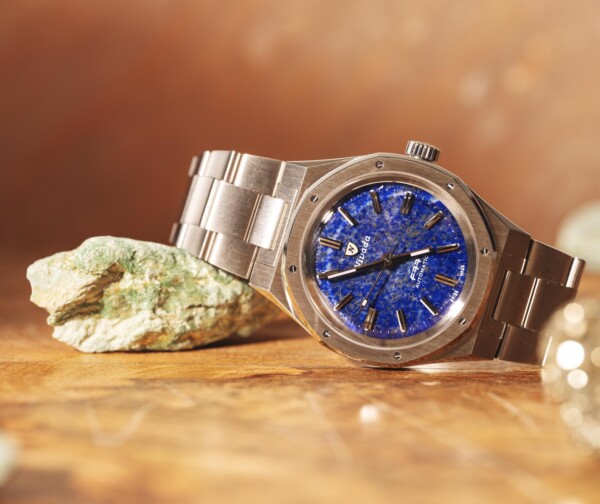








 Featured Videos
Featured Videos





